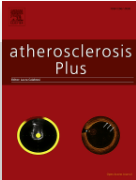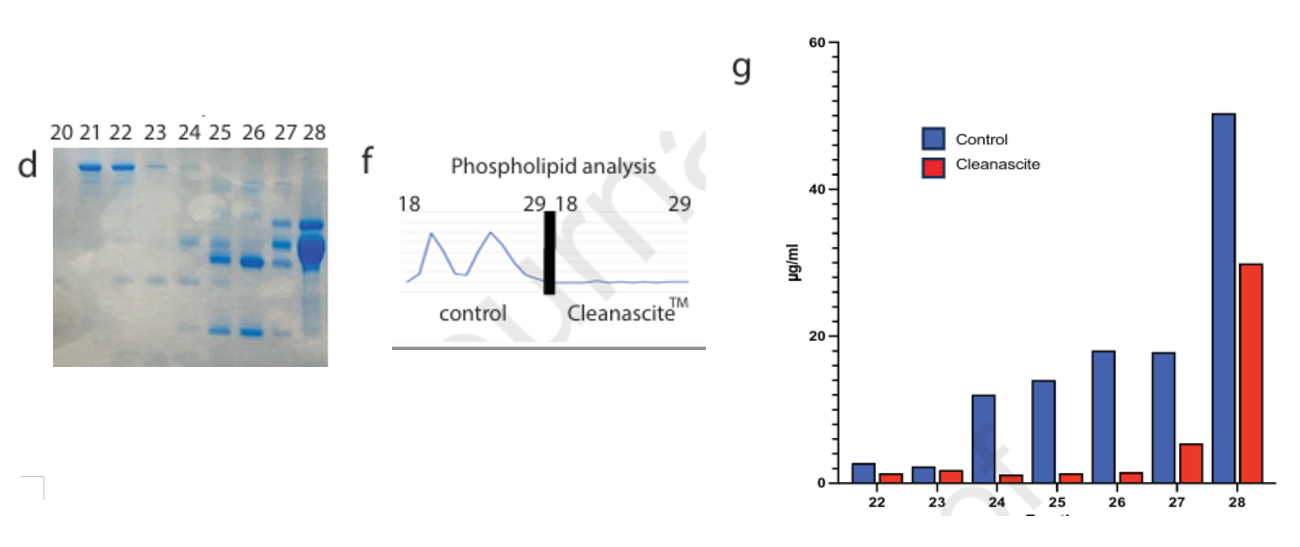|
Cleanascite™ Cited In Study of Biomarkers in Psoriasis and Cardiovascular Disease. Biotech Support Group reports on an article, describing the simplicity and efficiency of their lipid clearance sample preparation in a study of HDL-associated Vitamin D Binding Protein (DBP) correlates with disease severity in psorias News Release
Cleanascite™ Cited In Study of Biomarkers in Psoriasis and Cardiovascular Disease.
MONMOUTH JUNCTION, NJ, December 16, 2024 -- Biotech Support Group reports on an article, describing the simplicity and efficiency of their lipid clearance sample preparation in a study of HDL-associated Vitamin D Binding Protein (DBP) correlates with disease severity in psoriasis and cardiovascular disease. The citation is:
Vitamin D binding protein (DBP) serves a dual function as a vitamin D carrier and actin scavenger. Free DBP (S-DBP) (also known as Gene GC) is an abundant protein in human serum, while a smaller pool is bound to lipoproteins like HDL and VLDL. The role of DBP’s interaction with lipoproteins remains unclear. The investigators sought to compare whether HDL-associated DBP and/or total serum DBP could serve as useful biomarkers for assessing disease severity in psoriasis and cardiovascular disease. The article states “…determine whether DBP was found in HDL particles or just as a co fractioning protein from chromatography. Fractions 20 to 28 were treated with a lipid-removal agent (Cleanascite™), and while this treatment removed many of the proteins in fractions 21 to 27, the non-lipidated ‘albumin’ fraction remained (fig.1d). Furthermore, phospholipid analysis of fractions 18 to 29 revealed that 21, 22 and 25, 26 are rich in phospholipid and were removed with Cleanascite™ treatment (fig.1f). DBP was readily detected in fractions 24 to 27, but mostly removed upon lipid-removal. In the same conditions, DBP was abundantly detected in fraction 28 suggesting that in this fraction, DBP is not bound to lipidated proteins (fig.1g). At all tested concentrations of DBP, most remained unbound to the lipid removal agent demonstrating that DBP does not bind to Cleanascite™ in the absence of lipid.”
In summary, the data suggests that HDL-DBP may be both protective for inflammatory diseases and vulnerable coronary plaque. Due to DBP’s potential to bind lipids, actin and vitamin D, each of which have a role in CVD, makes it a compelling biomarker warranting further investigation. “This article demonstrates the most important characteristic of Cleanascite™, that it binds only the lipid-bound protein. While there are other lipid removal reagents, they suffer from non-specific protein binding. As demonstrated in this article, Cleanascite™ is the only suitable reagent that can highly differentiate the lipid-bound protein from the non-lipid protein. This feature can be applied to any investigation whereby the free and lipid-bound states need to be measured in the context of understanding disease or in the quest for biomarkers.” states Swapan Roy, Ph.D., President and Founder of Biotech Support Group. Download whitepaper entitled “Cleanascite™ - Lipid Removal and Cell Response Applications”, visit: For
more information visit: Cleanascite™
Lipid Removal Reagent and Clarification,
at Keywords: Lipid depletion, Cleanascite™, Vitamin D Binding Protein; high density lipoprotein; psoriasis; coronary artery disease
Converging with cultural and technological disruptions forthcoming in healthcare, Biotech Support Group develops methods for cost effective and efficient sample prep essential for these expanding markets. Following a tiered business strategy, the company continues its growth in the consumable research products area supporting the rapidly expanding installation of LC-MS instrument and computational infrastructure. For this market, key products include: AlbuVoid™ and AlbuSorb™ PLUS for albumin & IgG depletion, Cleanascite™ for lipid adsorption, HemogloBind™ and HemoVoid™ for hemoglobin removal, and NRicher™ for targeted proteomics and family specific proteome enrichment. For more information, go to http://www.biotechsupportgroup.com. For Business Development, contact: Matthew Kuruc 732-274-2866, mkuruc@biotechsupportgroup.com |

- About
- Products
- Hemoglobin Removal Kits
- Lipid Removal & Clarification
- Urine Protein & Low Abundance Enrichment
- Class Specific Enrichment
- Sample Prep Mass Spectrometry
- Functional & Chemical Proteomics
- Genomic Sample Prep
- Accessories
- Technical Resources
- References
- Publications & Reports
- FAQs
- Case Studies
- Cleanascite™ Unlocks Insights into Lipid-Driven Tumor Immunosuppression
- NRicher™ Bead Platform Provides Unique Sub-Proteome Biases And Fit For Purpose Opportunities for Targeted LC-MS Quantification
- BSG Products To Assist in Analyzing Macrophage Polarization
- Ectodomain Shedding and Enrichment of the Soluble Membrane Proteome
- Investigate out of the Venn Diagram box
- Methods to selectively deplete or purify Hemoglobin from Dried Blood Spots (DBS)
- The Utility of HemoVoid™ is Demonstrated in 3 Proteomic Investigations Identifying Potential Disease Specific Biomarkers
- The 4 common features of our sample prep products, known as the BSG Advantage, are highlighted in a selection of journal references.
- AlbuVoid™ Workflows Advance Cell Secretome Proteomics
- Lipid Removal for Phenotypic Cell Response in Cancer Research
- The Influence of Sample Prep Bias on LC-MS Targeted Peptide Quantification in Serum Proteomics
- Re-imagining proteomics for developing precision medicine biomarkers of the innate immune response in SARS-CoV-2
- Patent Application Describes New Proteomic Methods to Monitor Protease Inhibitor Function During Covid-19 Infections
- Efficient Hemoglobin Removal Advances Red Cell Proteomics Offering Many New Insights Into Inflammation and Infectious Disease
- The Potential for New Blood Biomarkers in the Management of COVID-19 Disease
- Establishing the Utility of HemoVoid™ and HemogloBind™ as Enrichment Tools for Proteomic Analysis of Red Cells and Whole Blood in Parkinson’s Disease
- Species Diversity Supported By BSG Products
- Poster Report Describes Loss of Functional Serpin Activity In Cancer Patient Blood
- AlbuVoid™️ PLUS & AlbuSorb™️ PLUS Evaluating Different Windows of Observation Solves The Many Challenges of Serum Proteomics
- Tackling the Challenges of Serum Proteomics
- Lipid Removal Sample Prep for Cell Response Applications
- Sample Prep for Proteomic Analysis of Saliva
- Biotech Support Group Featured in Book, "Functional Proteomics – Methods and Protocols"
- Sample Prep Liquid Biopsy Products Suitable for Proteomic Profiling of a Variety of Body Fluid Sample Types
- Albumin and High Abundance Depletion
- Using HemogloBind™ as a Hemoglobin Binding Reagent
- Diverse technologies available for researchers to selectively bind or enrich exosomes and extracellular vesicles.
- Stroma Liquid Biopsy™ Biomarkers Profile Pan-Cancer Dysregulation of the Serum Proteome
- Diverse Depletion and Enrichment Technologies Enhance Simplicity and Efficiency of Obtaining Quality Proteomic Information
- Use On-Bead Digestion to Improve Time Required for Serum Digestion
- Using AlbuVoid™ as a Serum Protein Enrichment Kit in Functional Proteomics
- Using Cleanascite™ as a Lipid Absorption and Clarification Reagent
- Using HemoVoid to Remove Hemoglobin Before Analysis
- Blog
- Contact
- Liquid Biopsy
 Playford
M, Li H, Dey A, Florida E, Teague H, Gordon S, Mehta N, HDL
associated Vitamin D Binding Protein levels are Inversely Associated
with Necrotic Plaque Burden in Psoriasis, Atherosclerosis Plus,
Playford
M, Li H, Dey A, Florida E, Teague H, Gordon S, Mehta N, HDL
associated Vitamin D Binding Protein levels are Inversely Associated
with Necrotic Plaque Burden in Psoriasis, Atherosclerosis Plus,
